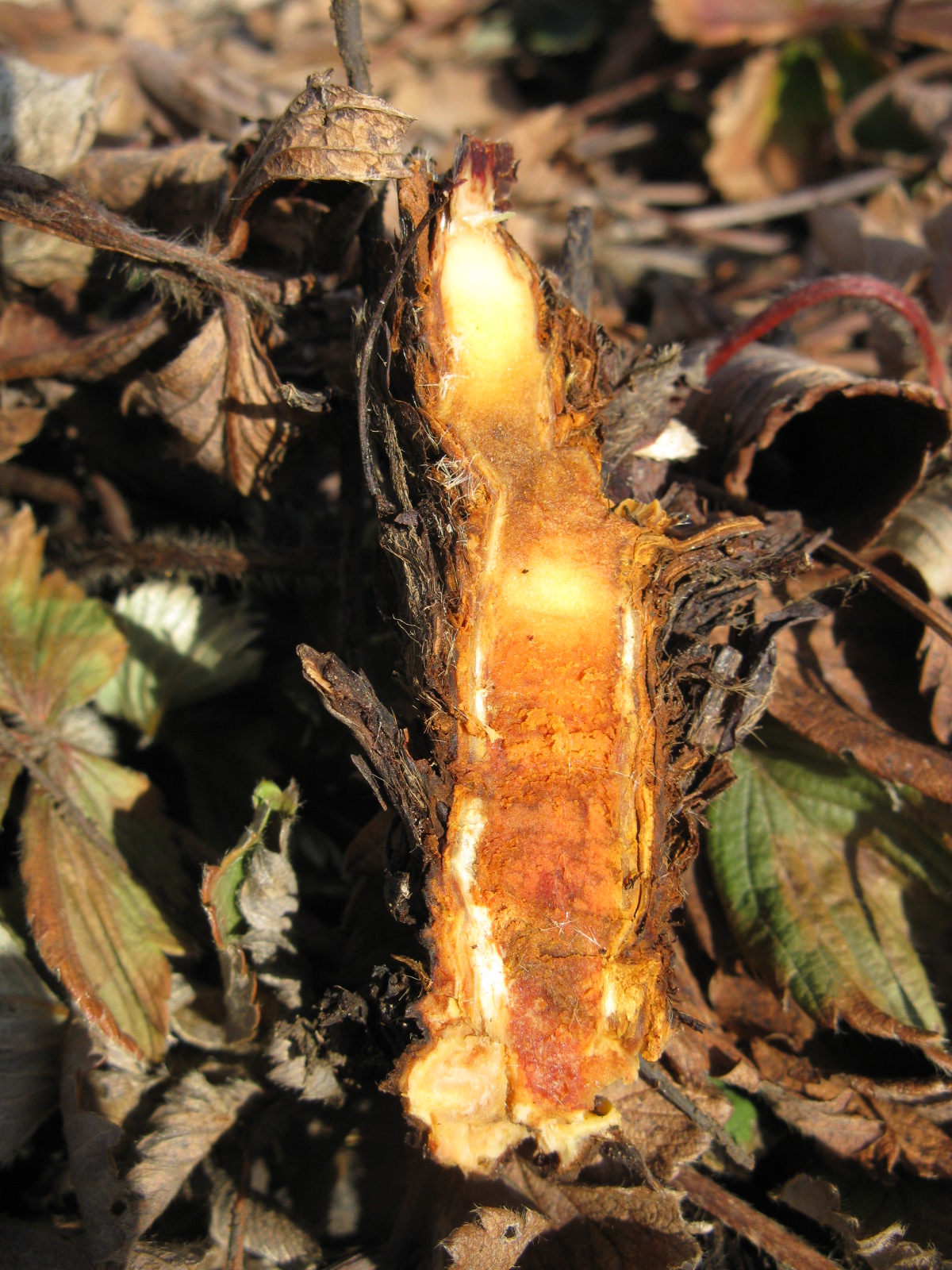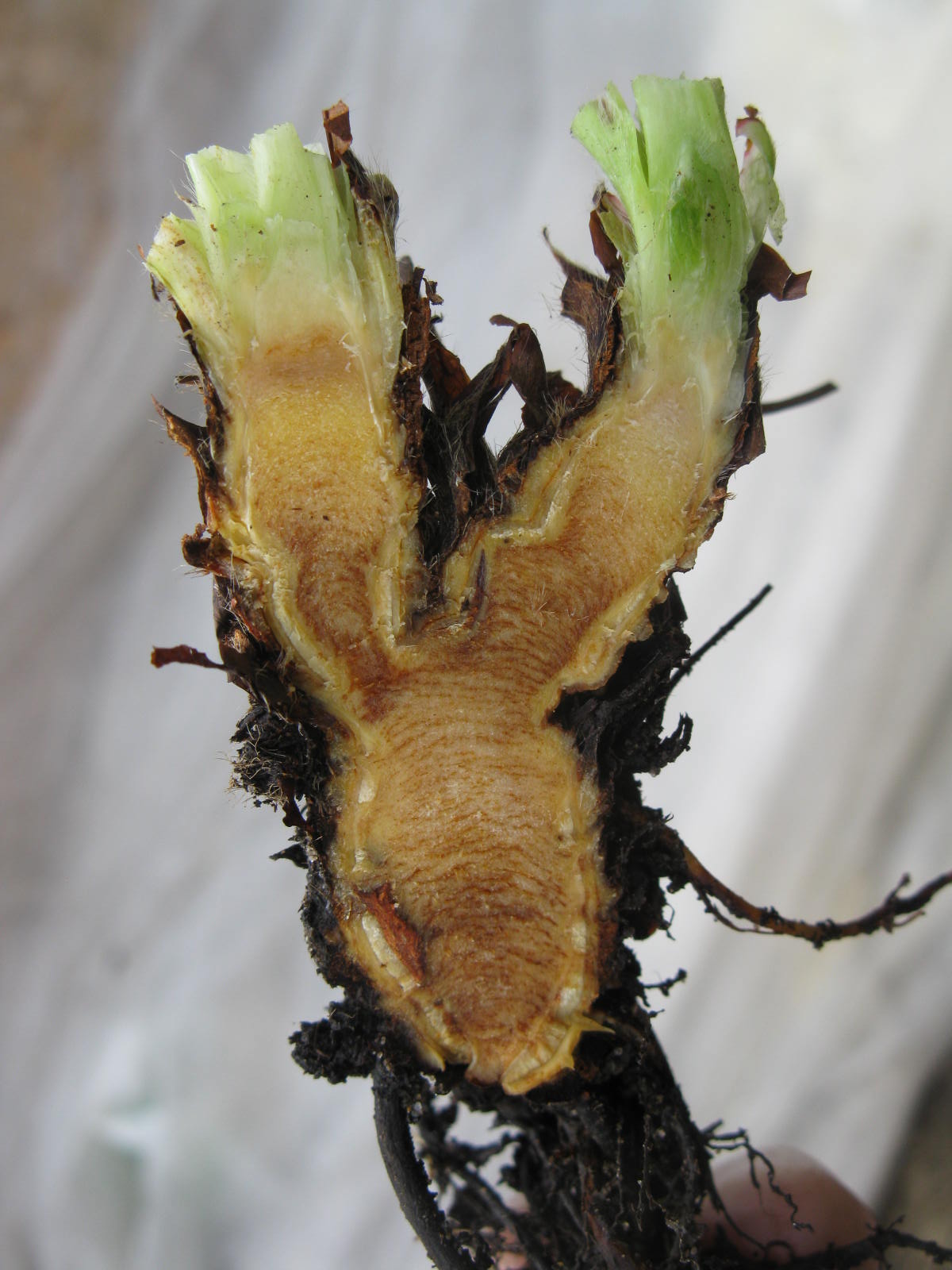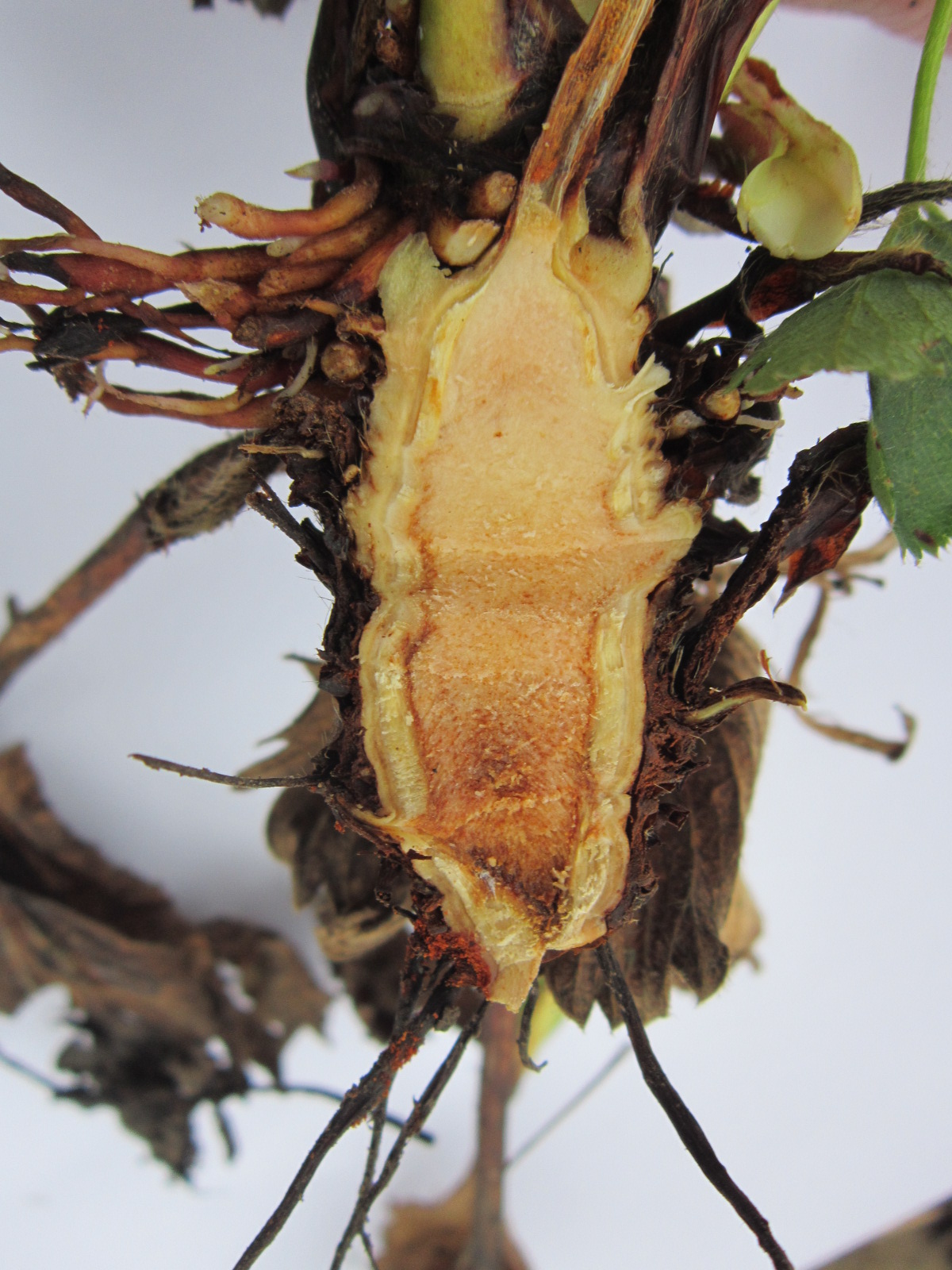Please click here to access the main AHDB website and other sectors.
- Home
- Knowledge library
- Strawberry cold injury: assessing critical damage
Strawberry cold injury: assessing critical damage
Learn how to assess the damage and predict the likely outcome.
Assessing the damage
Growers are often aware that some level of damage has occurred when assessing strawberry crown tissue after a cold spell. It can be difficult to quantify the damage and know if it is critical.
Crowns should be cut in a longitudinal cross section to inspect for tissue damage. Within several days of thawing, the upper portion of crown tissue appears to be light brown in colour and watery and may take over a week to show the beginnings of browning.
In early spring 2011, many strawberry businesses were fearful of losing significant yields due to winter damage. It was interesting to find that most crops were retained for fruiting despite evidence of winter damage and in most cases, they provided acceptable yields.
Plants can recover from mild winter damage, especially if conditions in spring are conducive to slow growth and development. However, plants rarely recover when the crown tissue is dark brown near the top of the crown.
The images illustrate crowns with varying levels of damage following the winter of 2010/11 and provide information on how they performed in the 2011 season.
 RSK ADAS
RSK ADAS
Figure 1. An elongated 2-3 year old strawberry crown that has been critically damaged.
 RSK ADAS
RSK ADAS
Figure 2. A borderline damaged strawberry crown that will produce acceptable yield.
 RSK ADAS
RSK ADAS
Figure 3. A damaged strawberry crown that delivered exceptional yield but will be shorter lived.
This ability to cope with cold demonstrates that even a slight improvement in winter protection can be a great help.
Useful links
Strawberry cold injury: Factors increasing risk of damage
Strawberry cold injury: the effect of weather

